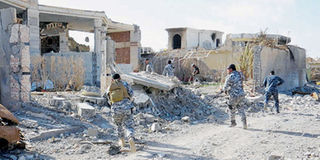Baghdad in ruins 15 years after Saddam fell

Baghdad. Baghdad After the US-led invasion of Iraq in 2003 there were hopes its millennium-old capital Baghdad could rise again from the ashes, but construction sites have remained idle as if time stood still.
For 15 years promises of rebuilding infrastructure in the second most populous Arab capital have fallen through and a multitude of projects have been shelved.
Baghdad’s skyline is dotted with the desolate sights of rusting cranes, while roads and bridges are gutted with potholes and craters from lack of maintenance.
Even the emblematic Fardous (paradise) Square, where a giant effigy of dictator Saddam Hussein was symbolically pulled down with the help of US Marines, remains to be revamped.
Infrastructure across Baghdad, a city of 900 square kilometres (350 square miles), is in dire need of repairs.
“Industry, education, health, agriculture... everything is now worse than it was during Saddam’s rule,” said businessman Sadeq al-Shomari. In 2004 and again in 2007, international conferences were organised to rebuild Iraq and donors pledged massive funds for projects that have never materialised.
Some of the funds allocated to rebuilding Baghdad have disappeared, according to Transparency International which ranks Iraq as the 12th most corrupt country in the world.
Teacher Zuheir Ouasmi blames it on corrupt officials who he says have pilfered Iraqi coffers, comparing his country’s woes to the folk tale “Ali Baba and the Forty Thieves”.
Before 2003 “the wealth of Ali Baba was in the hands of the dictator but now 40,000 thieves have take over Ali Baba’s cave and the treasure”, he said. (AFP)
As Baghdad’s infrastructure worsens, its population has swelled mainly due to an influx of people who fled conflict zones elsewhere in Iraq to settle in the capital.
In 2003, the capital was home to 4.7 million but now the population of Baghdad is 7.2 million strong.
During that same period the number of cars in the congested city also grew from 250,000 to more than two million vehicles.
Daily power cuts plague the population who, in order to keep their refrigerators working and mobile phones charged, must rely on privately-owned generators.
(AFP)



